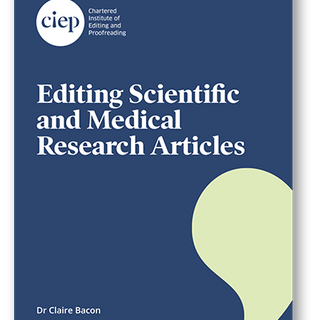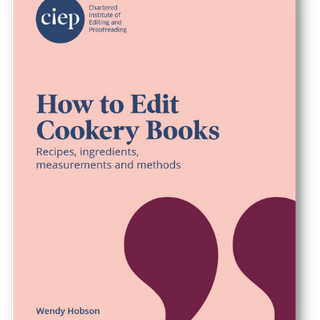Science, technology, engineering and medicine (STEM)
Get the CIEP guide
CIEP members have free access to the PDF versions of the guides once logged in.
AMA Manual of Style: A guide for authors and editors (hardcover, OUP USA, 11th edn, 2020)
This American Medical Association manual of style is also available by subscription or using your library card from Oxford. The current print edition runs to over 1,000 pages and costs £55–£66, so this is a very useful saving. The manual follows US usage, obviously, but nonetheless is a very valuable resource for anyone working on medical material.
Science Editors’ Handbook edited by Pippa Smart, Hervé Maisonneuve and Arjan Polderman (paperback, European Association of Science Editors, 2nd edn, 2013)
The EASE publications list has other titles of possible interest, and the Toolkit for Journal Editors also has an interesting range of resources.
EASE offers discounted membership rates to CIEP members, and EASE members can purchase EASE books at a discount. Full details can be found in the members' area.
Terminologia Anatomica by FIPAT, multilingual (hardcover, Thieme Medical Publishers, 2nd edn, 2011)
This internationally accepted anatomical terminology is particularly useful if you are editing medical books with authors from different parts of the world. An online version of the original 1998 edition is available at FIPAT along with Terminologia Histologica and Terminologia Embryologica.
The Wikipedia article entitled 'Outline of human anatomy' follows the TA, but is not so useful if your authors are using non-English naming conventions.
Tackling NHS Jargon: Getting the Message Across by Sarah Carr (paperback, Radcliffe Medical Press, 2002)
Written by CIEP Advanced Professional Member Sarah Carr, this book provides practical advice for all responsible for communicating information about healthcare. Explanations of common NHS jargon, with alternatives, are included together with plain speaking and writing techniques, and there are examples from real NHS management communications. Further information is available from the author.
Mathematics into Type by Ellen Swanson, updated by Arlene O'Sean and Antoinette Schleyer (online, American Mathematical Society, 1999)
Botanical Latin by William T. Stearn (paperback, David & Charles, 4th edn, 2004)
A weighty and authoritative tome (but with occasional and unpredictable sparks of humour) and very reliable.
Biological Nomenclature by Charles Jeffrey (paperback, Edward Arnold, 3rd edn, 1989, ISBN 0713129832pa)
If you can get hold of it, this volume is still useful as a quick reference and a more accessible guide. Covers all three major taxonomic divisions (bacteriological, botanical and zoological), but author is a botanist and so perhaps most useful for botanists in clarifying complexities and technicalities of biological nomenclature.
Online resource
The World Flora Online: An online flora of all known plants is incredibly useful – it's an up-to-date list of botanical scientific names and also provides the (out-of-date) synonyms that you may come across.
Mathematical Notation: A Guide for Engineers and Scientists by Edward R. Scheinerman (paperback, CreateSpace Independent Publishing Platform, 2011)
'Not an editing book, but I've found it a useful reference for checking bits of mathematics and notation I'm not sure I've remembered correctly. A bit niche!’
Writing Science in Plain English by Anne E. Greene (paperback, ebook, University of Chicago Press, 2013)
This book ‘is an excellent guide’.
Online resource
National Library of Medicine current gene nomenclature.
Online resource
IUPHAR/BPS Guide to Pharmacology receptor nomenclature.


